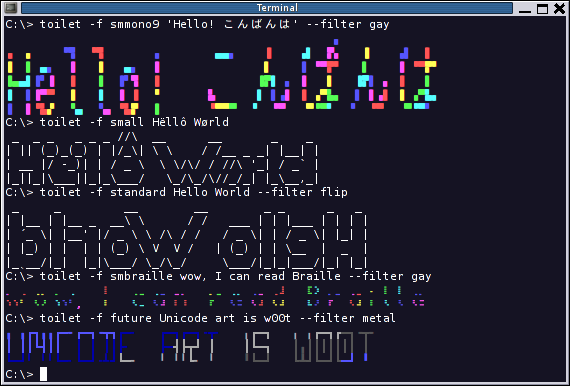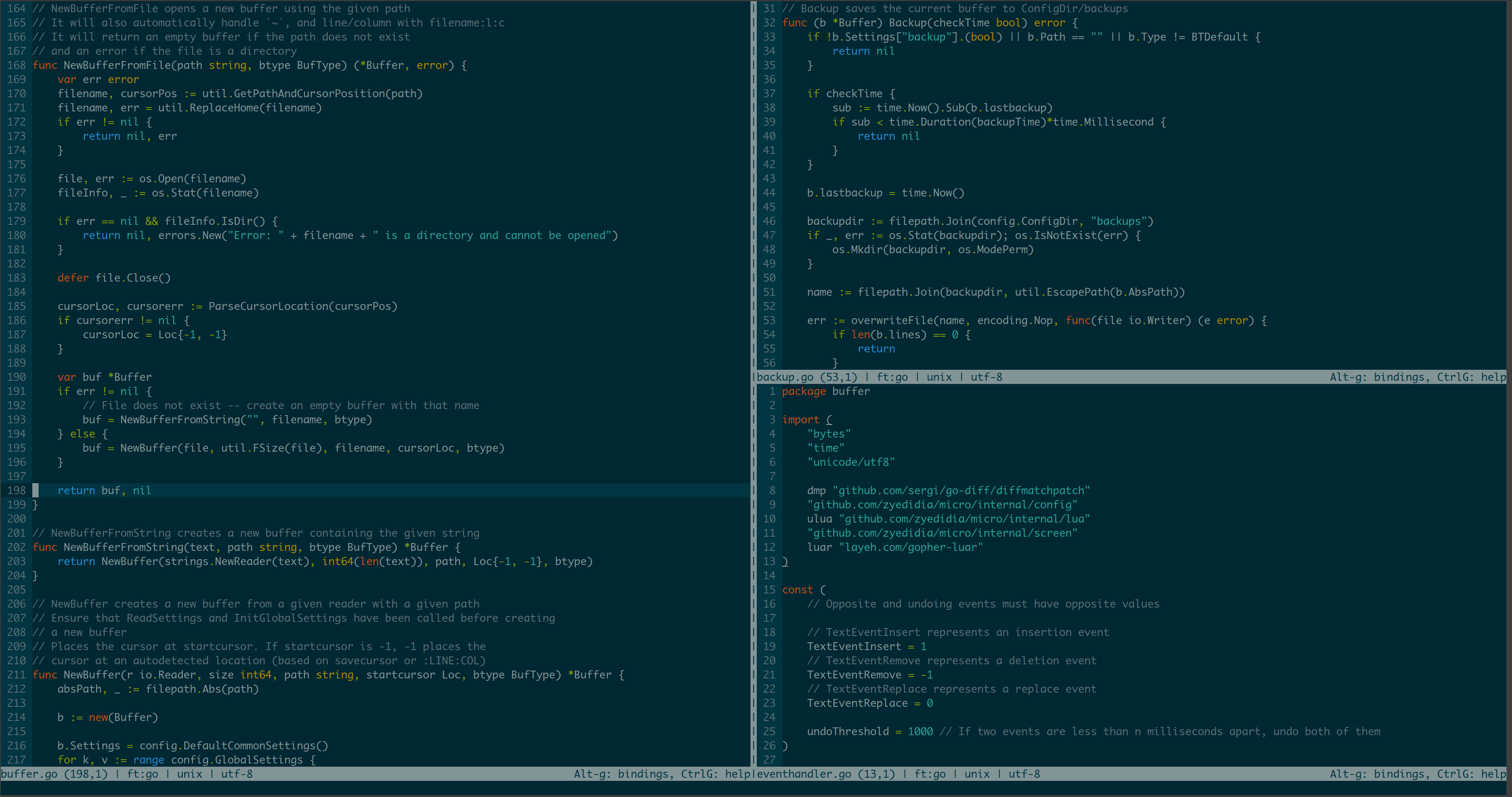131 private links
(JSON Query?) is sed-like processor for JSON data; can be used to process JSON files and data streams and perform operations such as those allowed by cat, sed, grep and awk on regular text files.
(Generic Colouriser) can be configured to parse a given text stream and to colorize it according to regexp written in configuration files; different patterns can be associated to file types.
A program that tries to improve FIGlet; can load FIGlet fonts; supports Unicode input and output, colour fonts and output, and various output formats, including HTML, IRC and ANSI; uses libcaca to produce nice textual effects.

Not exactly a font manager, but a nice program for making large letters out of ordinary text; an astonishing number of different fonts is available.
From the website: "WordGrinder is a word processor for processing words. It is not WYSIWYG. It is not point and click. It is not a desktop publisher. It is not a text editor. It does not do fonts and it barely does styles. What it does do is words. It's designed for writing text. It gets out of your way and lets you type."
"a modern, legacy free, simple yet efficient vim-like editor", and more: "The intention is not to be bug for bug compatible with vim, instead a similar editing experience should be provided. The goal could thus be summarized as 80% of vim's features implemented in roughly 1% of the code"; the editor is scriptable in LUA and supports editing large files.
Historically one of the preferred text editors; behavior based on editing modes; plenty of plugins and tips to address every possible editing problem.
A text editor similar to vim written in Python; many feature are nicely replicated, some are still missing; however, the advantage of this implementation is its simplicity, maintainability and extensibility, thanks to the Python implementation.
Text editor inspired by Sublime Text written in NodeJS; extendable in Javascript.

A work in progress attempt to improve vim, dropping older/unused OS compatibility, improving the codebase readability, modularity and maintainability; it has chances to become the next choice of vim users.
A terminal-based text editor written in Go that aims to be easy to use and intuitive, while also taking advantage of the full capabilities of modern terminals.

Easy to use, lightweight text editor; no complex keybindings to remember.
(Joe's Own Editor) is a compact text editor written in C; a detailed list of features and missing ones is explicitly reported in the website; this editor is mentioned in several web sources for its capability in handling large files.
A text editor with a drop-down menu facility that make it especially user-friendly.
One of the godfathers of text editors; free long-standing software project; tons of extensions and funcionalities; the biggest drawback (my taste): it needs E-Lisp for being programmed.
Secure and simple terminal sharing.
Terminal multiplexer; born to improve screen; client-server architecture, vi and emacs key-bindings, search in window feature and many more.
A fork of tmux that allows to share the terminal with other users. AFAIK, it connects to a centralized server to establish the connection. Someone may see this inconvenient for privacy issues.
Terminal multiplexer that split a physical terminal between several processes, typically interactive shells.
